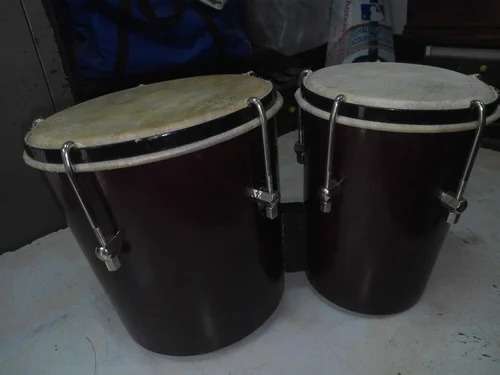Description
The Mbumbumbu drums are traditional musical instruments used by the Giriama people, an ethnic group in Kenya, particularly along the coastal region. The Mbumbumbu drums are typically made from hollowed-out logs or wooden shells, often carved from a single piece of hardwood such as mango or coconut wood. They can vary in size, with some being quite large and others smaller. The drums have a circular shape with a flat surface at the top and are open at the bottom. The surface of the Mbumbumbu drums is covered with animal skin, traditionally from goats or cows, which is tightly stretched and secured with ropes or cords. This drumhead serves as the playing surface. The sides of the drums may be decorated with intricate carvings or designs, reflecting the cultural aesthetics of the Giriama people. The Mbumbumbu drums produce deep, resonant tones with a rich and vibrant timbre. The sound can vary depending on the size and tension of the drumhead, as well as the technique used by the drummer. The drums are played with the hands or sticks, producing rhythmic patterns and beats that are integral to Giriama music and dance. Traditionally, the Mbumbumbu drums are played in ensembles, with multiple drummers performing together to create complex polyrhythms. Each drummer may be responsible for playing a specific rhythmic pattern or part, contributing to the overall groove and energy of the music. The drummers use their hands to strike the drumhead or sticks to produce different sounds and accents. The Mbumbumbu drums hold significant cultural importance among the Giriama people, serving as symbols of identity, heritage, and community. They are traditionally used in various cultural ceremonies, rituals, and social gatherings, including weddings, initiation rites, and harvest festivals. The drums play a central role in Giriama music and dance, providing the rhythmic foundation for traditional performances.




